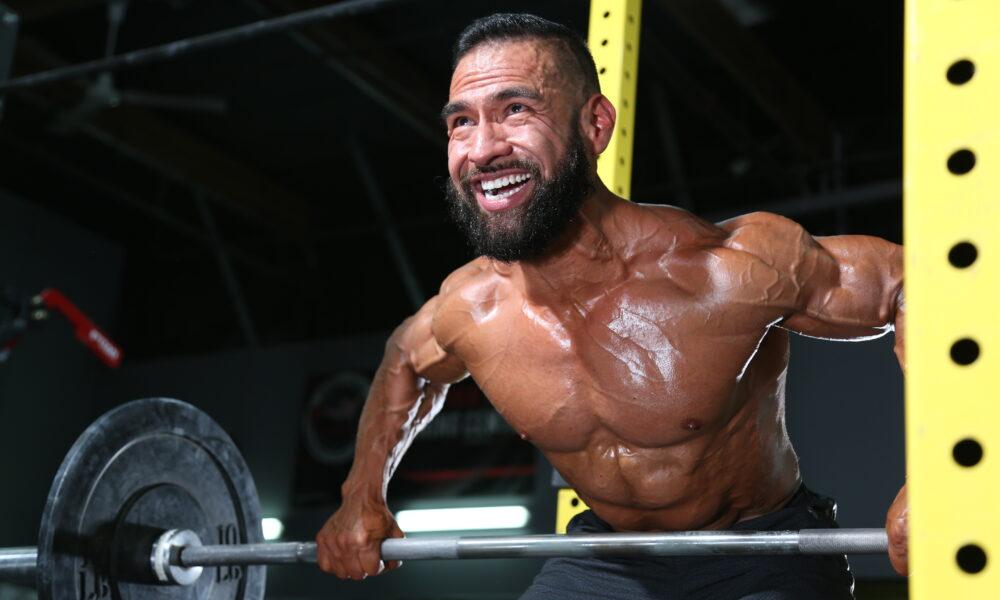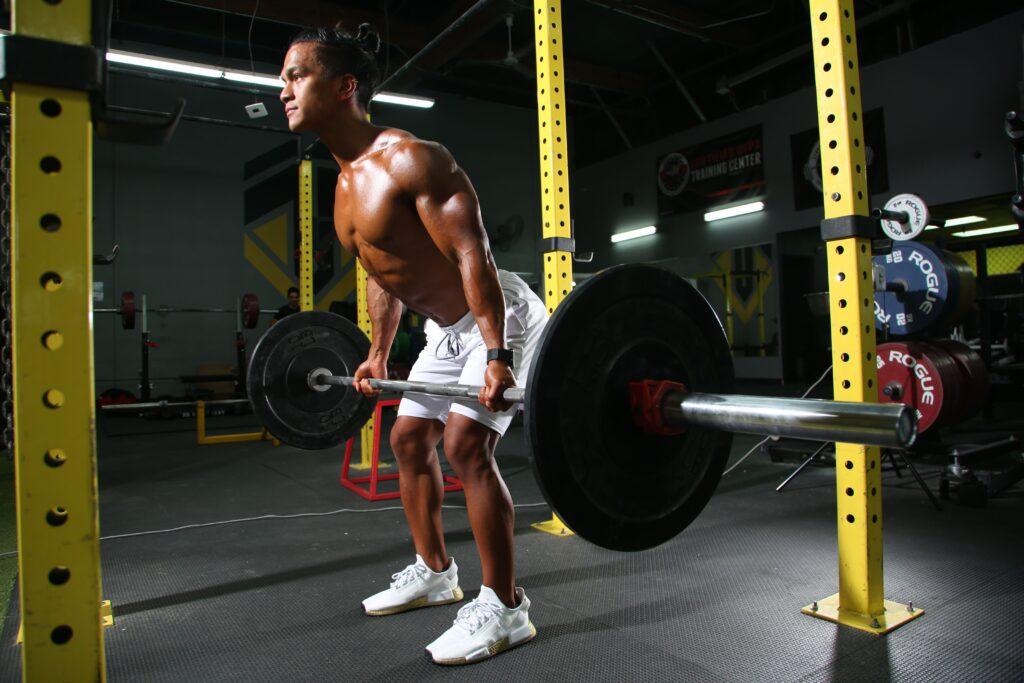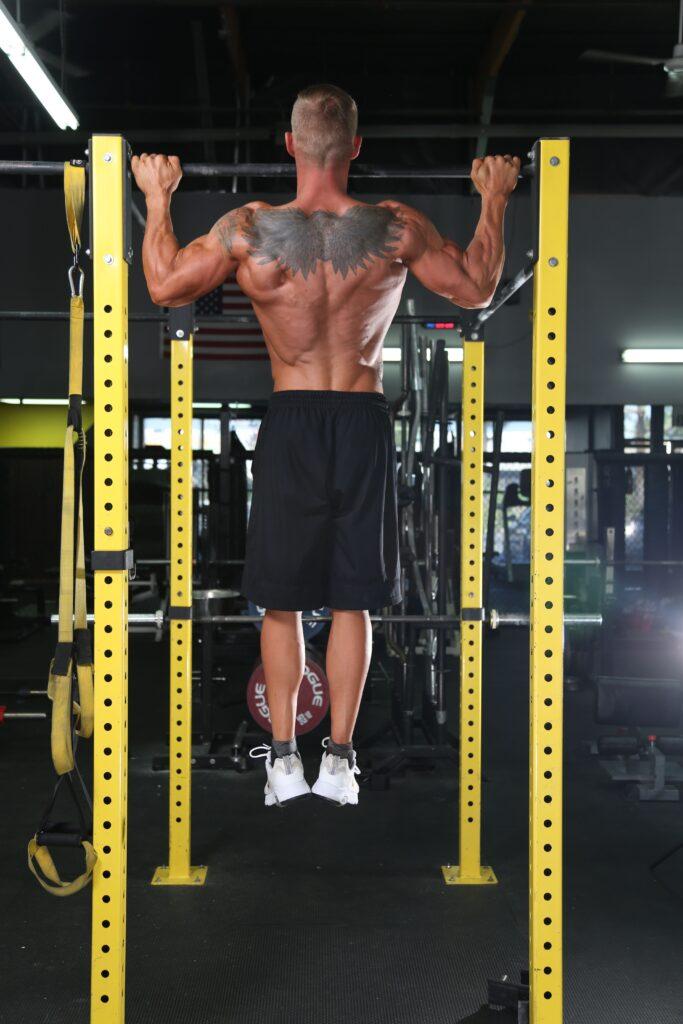

Lats are the pillars of a muscular, balanced, and resilient physique. Neglecting them can result in imbalances, hinder performance, and even pave the way for injuries.
So how do you build lats muscles, and what are the best exercises to build them?
This article details some of the most effective exercises to target your lats. It also outlines the benefits of lat exercises and the tips to help you train your lat muscles effectively.
What are Lats?
Lats, or latissimus dorsi, are large, flat, triangular muscles extending across the back’s lower and middle parts. They span from the upper arm bone (humerus) to the lower spine and pelvis. They are the largest muscles in the human back.
The primary function of the lats is to stabilize the spine and perform various shoulder joint movements. These include shoulder extension (pulling the upper arm down toward the lower back), shoulder adduction (pulling the upper arm toward the body’s midline), and internal shoulder joint rotation.
These shoulder movements allow you to perform various bodybuilding strength training exercises such as pull-ups, lat pulldowns, rows, and swimming strokes.
How to Effectively Train Your Lat
Training your lats requires a well-structured workout routine that targets these muscles comprehensively. Here are tips on how to train your lats without making any lat training mistakes.
Use Variety of Exercises
While vertical exercises such as chin-ups, pull-downs, and lat pulldowns are best for training lats, they are not good enough to widen your shoulders.
To have well-developed lats, train with horizontal and vertical exercises. A study shows that horizontal pulling workouts such as barbells and dumbbells are as effective as vertical pulling exercises in developing lats. In fact, horizontal pull workouts train lats into various angles and directions, producing more growth than vertical pull.
Apply Effective Weighing Cues
Most bodybuilders often fail to feel any impact on their lats when training their back and instead feel their forearms, biceps, and traps. As a result, they end up focusing on the parts with impact rather than lats, leading to minimal lat growth.
Research by scientists from the University of California Upstate has discovered a solution to this problem: effective weighing cues.
Pulling the weight with your back rather than your arm muscles is an effective weighing cue to help build more lat muscle. It increases lat activation, making you feel the impact of the training, which eventually leads to increased focus on training the lat. The more you intensely focus on muscles while training, the more they will grow.
Palpitating or tapping the participant’s lats immediately before or during the set is also effective in building your lat. It increases your attention on the lat and establishes a mind-muscle connection, which helps develop strength and lat muscle.
Muscle-mind connection is focusing your mental attention on the specific muscle or muscle group you are working during an exercise.
Other cues to help you train lat muscle effectively when doing vertical pulling and horizontal pulling workouts include:
- Pull your elbows onto the floor for the vertical pull exercise.
- Tuck your shoulder blades into your back pockets during the vertical pull exercise.
- Slamming your elbow into the ceiling when your body is parallel to the floor for horizontal pull workouts such as dumbbell rows and barbell rows
Use the Progressive Overload Method
Progressive overload is the best way to increase your lat gains when they have stopped getting bigger and stronger muscles. The method involves systematically growing the demands placed on the muscles over time to promote growth, adaptability, and improved performance.
You can increase the demands by increasing an exercise’s resistance or load by adding weight, resistance bands, or more challenging workout variations. You can also increase the volume of your workouts or adjust your exercise’s intensity. Depending on your goals, you may use heavier weights for fewer repetitions or lighter weights for higher repetitions.

Benefits of Lats Exercises
Lat exercises offer a wide range of benefits for upper body strength, posture, and aesthetics. Here are five key benefits of incorporating lat exercises into your fitness routine:
1. Enhanced Posture
Well-developed lats help balance the musculature of the upper back and shoulders, which can counteract the effects of poor posture caused by sitting at a desk or hunching over electronic devices. Lat muscles also support, strengthen, and stabilize the spine, reducing stress placed on it.
2. Improved Upper Body Strength
Exercises like pull-ups, lat pulldowns, and rows require the lats to lift or pull a significant amount of weight.
Over time, progressive overload (increasing the resistance) in these exercises can improve pulling strength, contributing significantly to your overall upper body strength.
3. Aesthetic Benefits
Training your lats with lat exercises can lead to strong and well-defined lats, contributing to the coveted “V-taper” appearance. This makes the upper body appear broader at the shoulders and narrow to the waist, enhancing your physique and overall aesthetics.
4. Improved Performance in Sports
Engaging in lat exercises, such as pull-ups and rows, enhances the mobility and flexibility of your upper body. This can significantly improve your athletic performance in activities like swimming, rock climbing, and gymnastics, where a wide range of shoulder motion is essential.
5. Shoulder Stability
Lat exercises promote shoulder stability by strengthening the lat muscles that support and control the shoulder joint and stabilize the scapula (shoulder blades) during various upper-body movements.
A stable shoulder joint is crucial for injury prevention and optimal performance in activities that involve overhead motions, such as swimming, weightlifting, and throwing sports.
The Top 8 Lats Exercises for Maximum Lat Muscle Gains
Here are the top 8 lats exercises for maximum lat muscle gains:
1. Deadlifts
While deadlifts are the best workouts for building stronger hamstring and glutes, they are also suitable for developing lats. With these workouts, you can carry the heaviest weight, resulting in more muscle gains and strength.
How to Do a Deadlift
Position the barbell on the floor in a power rack or lifting platform and stand facing the bar with your feet hip-width apart.
Bend your hips and knees and grasp the bar with an overhand grip. Keep your chest up, back straight, and shoulders down and back.
Lift the bar off the ground by pushing through your heels and extending your hips to stand up. As you lift, keep the barbell close to your body, almost brushing against your legs.
Push your hips back and gently lower the weight to the ground.
2. Chin-ups
Chin-ups are excellent for targeting the lats and engaging the biceps, rear deltoids, upper arms, and back muscles.
Chin-ups allow for progressive overload; you can gradually increase the resistance by adding weight or performing more repetitions, increasing lat strength and muscle growth.
How to Do Chin-ups
Hang from the bar with an underhand or overhand grip. Your arms should be slightly wider than shoulder-width apart, and your feet off the ground. Engage your core for stability.
Bracing your core, bend your elbows and shoulders, and pull your chest toward the bar before lowering your body back down with control.
3. Landmine Rows
Landmine rows are almost similar to barbell rows except for the angle of pull that sets them apart. Attaching the barbell behind the back allows landmine rows to offer more lat squeezing, providing more lat contraction.
The anchoring of the barbell also reduces the likelihood of cheating in squeezing, thus squeezing more for lat growth.
How to Do Landmine Rows
Secure one end of a barbell into a landmine attachment and load the opposite end with weight plates according to your desired resistance level.
Place a V bar handle on the weighted side of the barbell and bend at your hips and knees to grasp the end of the barbell with one hand. Your grip should be overhand, and your arms should be positioned just outside shoulder-width apart.
Pull the loaded end of the barbell upward toward your hip on the same side as your gripping hand. Keep your elbow close to your body as you pull.
Squeeze your lat muscles briefly before slowly lowering the barbell back to the starting position.
4. Seated Cable Rows
Seated cable rows are an excellent lat cable machine exercise that targets and strengthens the lats. They allow for the isolation of the lats without significant involvement of other muscle groups.
While they are effective as barbell rows in training lats, cable machines provide constant tension throughout the range of motion. This continuous resistance challenges the lat muscles throughout the exercise, leading to better muscle engagement and growth.
The Cable machines used for cable row offer a controlled environment that reduces the risk of injury compared to some free-weight exercises, making them suitable for beginners and individuals with joint concerns.
How to Do Cable Rows
Adjust the cable machine wide-grip handle attachment at chest height.
Sit on the cable row machine with your feet shoulder-width apart and knees slightly bent to reach the handles without curling your lower back.
Grasp the handle with an overhand grip and arms fully extended. Keep your back straight, chest up, and shoulders relaxed.
Pull the handle toward your lower rib cage, retracting your shoulder blades as you squeeze your lats. Keep your elbows close to your body as you pull.
Slowly extend your arms, returning the handle to the starting position while maintaining control.
5. Pull-ups
Pull-ups are compound exercises that involve multiple muscle groups. In addition to the lats, they work the biceps, rhomboids, rear deltoids, and other upper body muscles, making them highly efficient for overall upper body development.
How to do Pull-Ups
Stand facing the pull-up bar and grasp the bar with an overhand (pronated) grip, slightly wider than shoulder-width apart.
Hang from the bar with your arms extended and your feet off the ground. Engage your core and avoid swinging or using momentum.
Initiate the pull by squeezing your shoulder blades together and pulling your chest towards the bar until your lats are fully depressed. Bend your elbows to raise your chin over the bar.
Hold briefly before lowering your body to the hanging position.
6. Barbell Rows
Barbell rows are excellent exercises primarily targeting the lats and other upper back and posterior chain muscles. They help build back strength, improve posture, and enhance the overall upper body aesthetic.
How to Do Barbell Rows
Place a loaded barbell on the floor and stand with your feet shoulder-width apart in front of it.
Bend at your hips and knees to lower your torso until it’s almost parallel to the floor. Your back should be straight, and your head in line with your spine.
Grasp the barbell with both hands using an overhand grip slightly wider than shoulder-width apart. Ensure your grip is secure and your wrists are in a neutral position.
With your core tight and braced, engage your shoulder blades and pull the barbell towards your lower rib cage while keeping your elbows close to your body.
Hold a moment and slowly lower the barbell back to the starting point.
7. Dumbbell Rows
Dumbbell rows are the most straightforward workouts beginners can start with since they are easy to adapt and add to your workout routine. They target the lats and other muscles in the upper back, making them an effective choice for building back strength and muscle.
How to Perform a Dumbbell Row
Stand with your feet hip-width apart and hold a dumbbell in each hand with a neutral grip.
Hinge at your hips to lean forward until your torso is almost parallel to the ground. Keep your back straight and core engaged throughout the exercise to maintain a stable posture.
Pull one dumbbell up towards your hip by bending your elbow. Keep your upper arm close to your torso as you lift the weight.
Inhale and lower the dumbbell in a controlled manner back to the starting position
8. Lat Pulldowns
The lat pulldown is a compound strength training workout similar to chin and pull-up exercises. The only difference is that it primarily targets the lat muscles.
Lat pulldown is performed on a cable machine with various grip attachments, such as wide grips and angled handles. These options allow you to concentrate on working out your lats without worrying about your grip or coordination of your lower body.
How to Do Lat Pulldown
Sit on the lat pulldown machine and adjust the thigh pads to fit snugly over your thighs, securing your body in place.
Grasp the wide grip bar with an overhand grip, slightly wider than shoulder-width apart. Keep your back straight and tighten your core.
Pull the bar down toward your chest in a controlled manner, bending at your elbows and squeezing your shoulder blades together as the bar approaches your upper chest.
Slowly return the bar to the starting position.
Conclusion
Incorporating lat exercises into your fitness routine is the key to building strong, well-defined lat muscles. These exercises enhance upper body strength, improve posture, and contribute to overall upper body development.
Whether you’re a seasoned gym enthusiast or just starting your fitness journey, include lat exercises like pull-ups, lat pulldowns, and cable rows in your workouts.
To train the lat muscles effectively, focus on progressive overload, mix horizontal and vertical pull exercises, and consistency. Also, track your progress, set goals, and watch your lats grow stronger with each session.























You must be logged in to post a comment Login